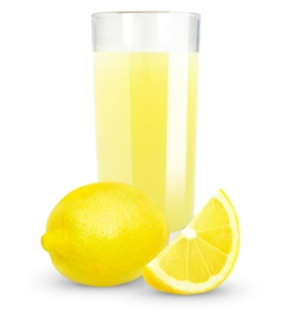
Lemon Pomace
Lemon
Citrus limon
From the industrial processing of juice and essential oils, lemon pomace is produced, which include peel, stems, and seeds. This pomace mostly consists of pectin, cellulose, hemicellulose, and simple sugars.
By-Products
Lemon pomace is rich phenolic compounds as hydroxycinnamic acids (chlorogenic acid) and flavonoids (flavonols and flavanone). Eriocitrin, one flavanone glycoside, was the main phenolic compound (17.49 mg/g), followed by hesperidin (2.73 mg/g). The Total Phenolic Compound (TPC) was 43.38 mg GAE/g ± 0.84 mg GAE/g and the Total Flavonoid Compound (TFC) was 20.76 mg ± 0.61 mg ECE/g. This by-product has a good antioxidant capacity measured by DPPH radical (33.17 ± 2.94 mg Trolox/g of extract).

Table - Individual phenolic compounds contents by HPLC-DAD
| Chromatographic Polyphenolic Profile: 18 compounds (Barbosa et al., 2021) | |
| Phenolic acids | |
| benzoic acid derivates | Protocatechuic acid (16.08 ± 1.729 g/g dry basis) Hydroxybenzoic acid (20.27 ± 1.053 gdry basis) |
| hydroxycinnamic acids derivatives | Caffeic acid (14.67 ± 0.4107 g/g dry basis) Chlorogenic acid (386.7 ± 11.80 gdry basis) p-Coumaric acid (6.424 ± 0.2468 gdry basis) |
| Flavonoids | |
| flavanones glycosides | Eriocitrin (17,493 ± 115.5 g/g dry basis) Hesperidin (2728 17.32 gdry basis) Naringenin (42.12 ± 0.8605 gdry basis) |
| Flavonols glycosides | Isoquercetin (111.6 ± 0.8220 g/g dry basis) Rutin (44.72 ± 0.5788 gdry basis) Quercetrin (106.0 ± 0.3979 gdry basis) |
| Total Phenolic Compounds Content (TPC) | 43.38 ± 0.84 mg GAE/g |
| Total Flavonoid Compounds (TFC) | 20.76 ± 0.61 mg ECE/g |
| Antioxidant Capacity (Barbosa et al., 2021) | |
| by free radical DPPH Inhibition Assay | 51.67 ± 4.61 % Inhibition 33.17 ± 2.94 mg Troloxof Extract |
| by -Carotene Bleaching Assay | 67.35 ± 1.96 |
Lemon pomace are natural source of pectin. Pectin is applied in food industry as gelling agent, thickener, texturizer, emulsifier and stabilizer, with the duality of being health-promoting functional ingredient as a dietary fiber and prebiotic.
Lemon pomace extracts can be included in functionalized foods (biscuits, breads), enriching phenolic content and their health benefits and increasing intrinsic resistance to lipid oxidation due to the antioxidant capacity, improving the shelf-life of product.


